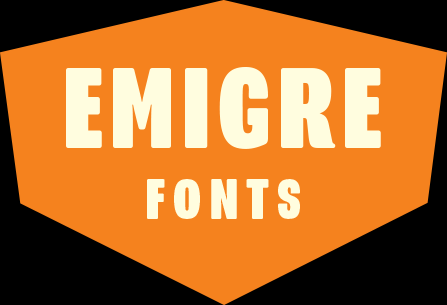A Talk at Gallery 16
By Zuzana Licko
Excerpt from a talk at Gallery 16 on June 24th, 2023, about the interplay of fonts, ceramics, and weavings that inspired the work in the exhibit.
People often ask me about my ceramic cone sculptures, and how they relate to my work with fonts. I approached the sculptures as I would a typeface. Which is to create a system of elements that can be combined and repeated in various configurations. With an alphabetic font, these combinations create words, but if the elements are abstract, they can form patterns.
The process starts with setting up rules, because defining limits creates guidance to the thought process. As you implement those rules, you soon realize if they need to be adjusted and expanded. For this reason, I like to start with very simple rules, so I began with a single straight line, drawn at specific angles.
The next step was to translate these ideas into ceramic form. Working on a potter's wheel, as it spins around, a diagonal line turns into a cone. And a horizontal line turns into a disk. I arrived at 3 cone shapes: small, medium and large. The angle on the medium one is 45 degrees, so the height is half the width. The small one is the same height, but narrower. And the large one is the same width, but taller.
When I made the ceramic pieces, I intuitively exaggerated the size differences, so the measurements are not exact to my plans. But I did want the shapes to repeat exactly, so I made molds. I made slump molds that I fill with clay slabs, and compress on the wheel, similar to jiggering, but done manually.
These elements are stacked onto a metal stand, with a central pole, so it’s like stringing beads. I added small ceramic spacers between the disks, which allows them to float. This creates voids that imply shapes, and I love that these spaces allow you to look through the form, to see it's depth.
As I played with arranging the ceramic pieces on the stands, I risked damaging them with the repeated handling. So I went back to the computer to visualize their arrangement. For this, I created a font, so each element could be typed as a letter, then repeated and edited as a line of text. Since typing happens in a horizontal line, the cone shapes are turned 90 degrees in the font, so they are stacked horizontally.
When Gallery 16 invited me to show alongside Rex Ray, I created 3 new sculptures to accompany his vibrant collages. I added pops of color and some fluid shapes. These shapes are wheel thrown, and are essentially deconstructed flower vases. These vase shapes embrace the flower elements in the collages.
Then, making the font for the sculptures gave me the idea for a system of connected lines. Each element is square, so it works with any other element, in both horizontal and vertical directions, unlike the cones font. The basic rule I used, was to construct each element with a diagonal line at each corner, making it connect to any other element in the font. (This font is named Crackly, and you can test drive it here.) I was amazed at the patterns that emerged. I was seeing all sorts of perspectives, with shifting planes. In the same way that combinations of letters take on new meaning when composed into recognizable word shapes, pattern elements morph into new forms when combined. To then capture these constructions as wall artworks, weaving was obvious, as a perfectly suited medium. The lines convert well to bitmaps, and weavings are essentially physical bitmaps.
Once I determine the size of a weaving, I prepare a bitmap image file and send it to a special weaver in North Carolina, that has computer driven looms, called jacquard looms. Through their software, each pixel in my bitmap file sends a specific set of instructions to the loom. A range of colors can be created by interweaving just 4 colors of yarn, similar to the blending of colors that happens in 4 color printing, or the 3 led colors on a computer screen. This blending is a “trick if the eye” which happens in our human perception.
I love how these weavings relate to my early bitmap font work, which initiated my journey into typefaces in the first place.


